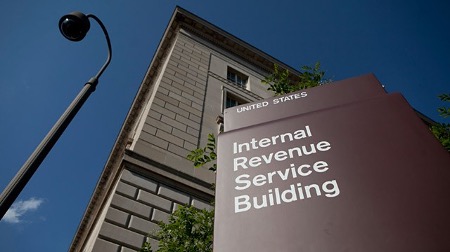 Summertime means the 2020 tax filing season is firmly in the rearview mirror for millions of Americans! This year, summer also means more money for you thanks to the child tax credit advance payments. Find out what you need to know about these payments in this month’s newsletter. Also read about how to maximize your vehicle expense deduction if you’re a business owner, and several things to consider when looking for your next banking relationship.
Summertime means the 2020 tax filing season is firmly in the rearview mirror for millions of Americans! This year, summer also means more money for you thanks to the child tax credit advance payments. Find out what you need to know about these payments in this month’s newsletter. Also read about how to maximize your vehicle expense deduction if you’re a business owner, and several things to consider when looking for your next banking relationship.
Please call if you would like to discuss how this information could impact your situation. If you know someone who could benefit from this newsletter, feel free to send it to them.
Get Your Child Tax Credit Payments NOW!
 The first advance payment from the newly expanded child tax credit was recently sent out by the IRS. Payments are scheduled to be made on the 15th of each month through December.
The first advance payment from the newly expanded child tax credit was recently sent out by the IRS. Payments are scheduled to be made on the 15th of each month through December.
Here’s what you need to know about the child tax credit and the advance payments.
Background
For the 2021 tax year, an expanded child tax credit reduces your tax bill by $3,600 if you have a qualifying child that’s age 5 or under, or by $3,000 if you have a qualifying child from age 6 to 17.
If the total amount of the child tax credit for your family exceeds the total taxes you owe, you’ll receive the amount of the credit as a refund.
Child tax credit advance payments
Instead of waiting to file your tax return to receive the entire amount of your child tax credit, the IRS is directed by Congress to send 50% of the credit to you in six monthly payments beginning in July 2021.
For example, say you have three kids, ages 10, 12 and 16. Also assume your income is not too high and your children meet the IRS definition of a qualifying child. Instead of waiting until 2022 when you file your 2021 tax return to receive the entire $9,000 child tax credit, you can get paid half of the child tax credit amount, or $4,500, in 2021.
The advance payments began July 15 and continue for six months until December 15. The family in this example would receive six payments of $750 starting July 15, for a total of $4,500.
What you need to know
The monthly payments are automatic. You’ll automatically receive advance payments if:
- You filed a 2019 or 2020 tax return and claimed the credit, OR
- You gave information in 2020 to receive the Economic Impact Payment using the IRS non-filer tool, AND
- The IRS thinks you are eligible, AND
- You did not opt-out of the early payments.
Register with the IRS. If you didn’t file a 2019 or 2020 tax return but are otherwise eligible for the child tax credit, you’ll need to register with the IRS to receive the child tax credit. Click here to visit the IRS website to find out if you need to register.
Consider if you should opt out of the advance payments. Getting half of your child tax credit ahead of time may not be the right move for everyone. For example, if your 2021 income ends up higher than expected, you may need to pay back the advance payments when you file your tax return. To opt out, click here to visit the IRS’s child tax credit update portal.
Help! I Just Got a Letter From the IRS
 Summertime means the 2020 tax filing season is firmly in the rearview mirror for millions of Americans. But summertime is also the season when the IRS sends letters to unlucky taxpayers demanding more money!
Summertime means the 2020 tax filing season is firmly in the rearview mirror for millions of Americans. But summertime is also the season when the IRS sends letters to unlucky taxpayers demanding more money!
If you receive a notice from the IRS, do not automatically assume it is correct and submit payment to make it go away. Because of all the recent tax law changes and so little time to implement the changes, the IRS can be wrong more often than you think. These IRS letters, called correspondent audits, need to be taken seriously, but not without undergoing a solid review. Here’s what you need to do if you receive one.
Stay calm. Don’t overreact to getting a letter from the IRS. This is easier said than done, but remember that the IRS sends out millions of these correspondence audits each year. The vast majority of them correct simple oversights or common filing errors.
Open the envelope! You would be surprised how often taxpayers are so stressed by receiving a letter from the IRS that they cannot bear to open the envelope. If you fall into this category, try to remember that the first step in making the problem go away is to open the correspondence.
Conduct a careful review. Review the letter. Understand exactly what the IRS is explaining that needs to be changed and determine whether or not you agree with their findings. The IRS rarely sends correspondence to correct an oversight in your favor, but sometimes it happens.
Respond timely. The IRS will tell you what it believes you should do and within what time frame. Ignore this information at your own risk. Delays in responses could generate penalties and additional interest payments.
Get help. You are not alone. Getting assistance from someone who deals with this all the time makes the process go much smoother. And remember, some of these letters could be scams from someone impersonating the IRS!
Correct the IRS error. Once you understand what the IRS is asking for, a clearly written response with copies of documentation will cure most IRS correspondence audits received in error. Often the error is due to the inability of the IRS computers to match documents it receives (for example 1099s or W-2s) to your tax return. Pointing out the information on your tax return might be all it takes to solve the problem.
Certified mail is your friend. Any responses to the IRS should be sent via certified mail or other means that clearly show you replied to their inquiry before the IRS’s deadline. This will provide proof of your timely correspondence. Lost mail can lead to delays, penalties, and additional interest tacked on to your tax bill.
Don’t assume it will go away. Until receiving definitive confirmation that the problem has been resolved, you need to assume the IRS still thinks you owe them money. If no correspondence confirming the correction is received, you should follow-up with another written confirmation request to the IRS.
Upcoming Dates:
September 6
– Labor Day
September 15
– Filing deadline for 2020 calendar-year S corporation and partnership tax returns on extension
– 3rd quarter installment of 2021 estimated income tax is due for individuals, calendar-year corporations and calendar-year trusts & estates
Make the Most of Your Vehicle Expense Deduction
 Tracking your miles whenever you drive somewhere for your business can get pretty tedious, but remember that properly tracking your vehicle expenses and miles driven can lead to a significant reduction in your taxes.
Tracking your miles whenever you drive somewhere for your business can get pretty tedious, but remember that properly tracking your vehicle expenses and miles driven can lead to a significant reduction in your taxes.
Here are some tips to make the most of your vehicle expense deduction.
- Keep track of both mileage and actual expenses. The IRS generally lets you use one of two different methods to track vehicle expenses – the standard mileage rate method or the actual expense method. One year the mileage method may result in a higher deduction, while the actual expense method may be higher in a subsequent year. But you won’t know which method results in a higher deduction unless you track both your mileage and actual expenses.
- Consider using standard mileage the first year a vehicle is in service. If you use standard mileage the first year your car is placed in service, you can then choose which expense tracking method to use in subsequent years. If you initially use the actual expense method the first year your car is placed in service, you’re locked in to using actual expenses for the duration of using that car in your business. For a car you lease, you must use the standard mileage rate method for the entire lease period (including renewals) if you choose the standard mileage rate the first year.
- Don’t forget about depreciation! Depreciation can significantly increase your deduction if you use the actual expense method. For heavy SUVs, trucks, and vans with a manufacturer’s gross vehicle weight rating above 6,000 pounds, 100% bonus depreciation is available through the end of the 2022 tax year if the vehicle is used more than 50% for business purposes. Regular depreciation is available for vehicles under 6,000 pounds with annual limits applied.
- Don’t slack on recordkeeping. The IRS mandates that you track your vehicle expenses as they happen (this is called contemporaneous recordkeeping). You’re not allowed to wait until right before filing your tax return to compile all the necessary information needed to claim a vehicle deduction. Whether it’s a physical notebook you stick in your glove compartment or a mobile phone app, pick a method to track your mileage and actual expenses that’s most convenient for you.
Please call if you have any questions about maximizing your business’s vehicle expense deduction.
Get the Best Bank for Your Buck

A checking account at one bank is the same as a checking account at another bank, right? Well, maybe not. In fact, according to the J.D. Power 2021 U.S. Retail Banking Satisfaction Study, now 41% of people do all their banking online. This is a pretty big shift from traditional banking.
After reviewing the financial strength of a bank, here are several other things to consider as you decide what’s really most important to you in selecting a bank.
The online bank versus nearby location
While having a nearby brick-and-mortar location is important to many banking consumers, you might find better interest rates with an online-only bank because they don’t spend lots of money to maintain physical branches. As people switch to taking care of all their basic banking transactions online, one of the reasons to visit your local bank branch is to talk with a banker. If you believe you’d benefit from such discussion, make sure the online bank you’re considering will facilitate that for you.
Understand key bank fees
In addition to charging loan fees when they lend out money, banks bring in much of their revenue by charging fees on your deposit accounts. You’ll have a much more positive experience by ensuring your bank’s fees don’t outweigh the benefits of the account you’re considering. Here are three key fees to understand:
- Monthly maintenance fees. This is a monthly fee a bank charges on an account. Understand how yours works. Banks will waive these fees if your account is above a certain balance. Others waive the fees if you behave in a way they want you to behave. For instance, if you use a debit card versus writing a paper check. Others want you to make direct deposits. Still others want you to use their bill pay service. Understand this fee class and determine if you can abide by the terms your bank sets for them.
- Overdraft fees. These fees are charged to a checking account if you attempt to buy something but don’t have enough money in your account. There are a variety of ways to avoid overdraft fees, such as signing up for a protection program or linking your savings account to automatically pay the rest of the bill. Take the time to understand your bank’s options to avoid overdrafts and the cost associated with them.
- ATM fees. Some ATMs require you to pay money to use their machines, especially if the ATM you’re using isn’t in your bank’s network. Don’t overlook the opportunity to save money by ensuring that the bank you’re considering supplies ATMs in your area so you won’t have to pay a fee every time you need to use an ATM.
Other banking tools
Banks often provide tools to help you budget your daily and monthly expenses. Many offer free credit scores and credit monitoring. Others offer automatic transfers into a savings account. Still others offer the ability to open multiple savings accounts and label each account for different purposes.
Keep these tips in mind the next time you need to choose a new bank. With many different banks to choose from, a little research can ensure the bank you choose fits your financial needs and priorities.




